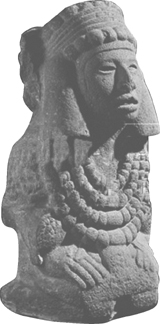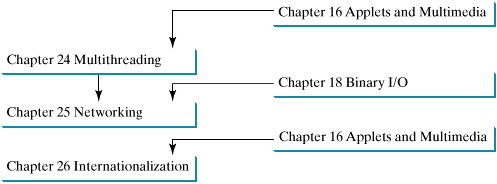26.3. Displaying Date and Time
The Goddess Chalchihuitlicue, found in the Valley of Mexico, 1300-1500 AD (stone), Aztec / Muse de l'Homme, Paris, France / Bridgeman Art Library

This part of the book is devoted to three unique and useful features of Java. Chapter 24 treats the use of multithreading to make programs more responsive and interactive. Chapter 25 introduces how to write programs that talk with each other from different hosts over the Internet. Chapter 26 covers the use of internationalization support to develop projects for international audiences.
[Page 772] Prerequisites for Part 6
Chapter 24, "Multithreading," or Chapter 26, "Internationalization," can be covered after Chapter 16, "Applets and Multimedia." Chapter 25, "Networking," is dependent on Chapter 24, "Multithreading," and Chapter 18, "Binary I/O."

| |||
| |||
| |||
Chapter 24. Multithreading
Mayan God Shel, Mexico. Photographer: Philip Coblentz. Courtesy Brand X Pictures.
Objectives |
|
24.1. Introduction
One of the powerful features of Java is its built-in support for multithreading. Multithreading is the capability of running multiple tasks concurrently within a program. In many programming languages, you have to invoke system-dependent procedures and functions to implement multithreading. This chapter introduces the concepts of threads and how to develop multithreading programs in Java.
EAN: N/A
Pages: 503